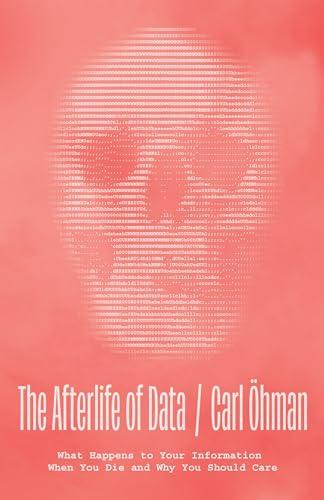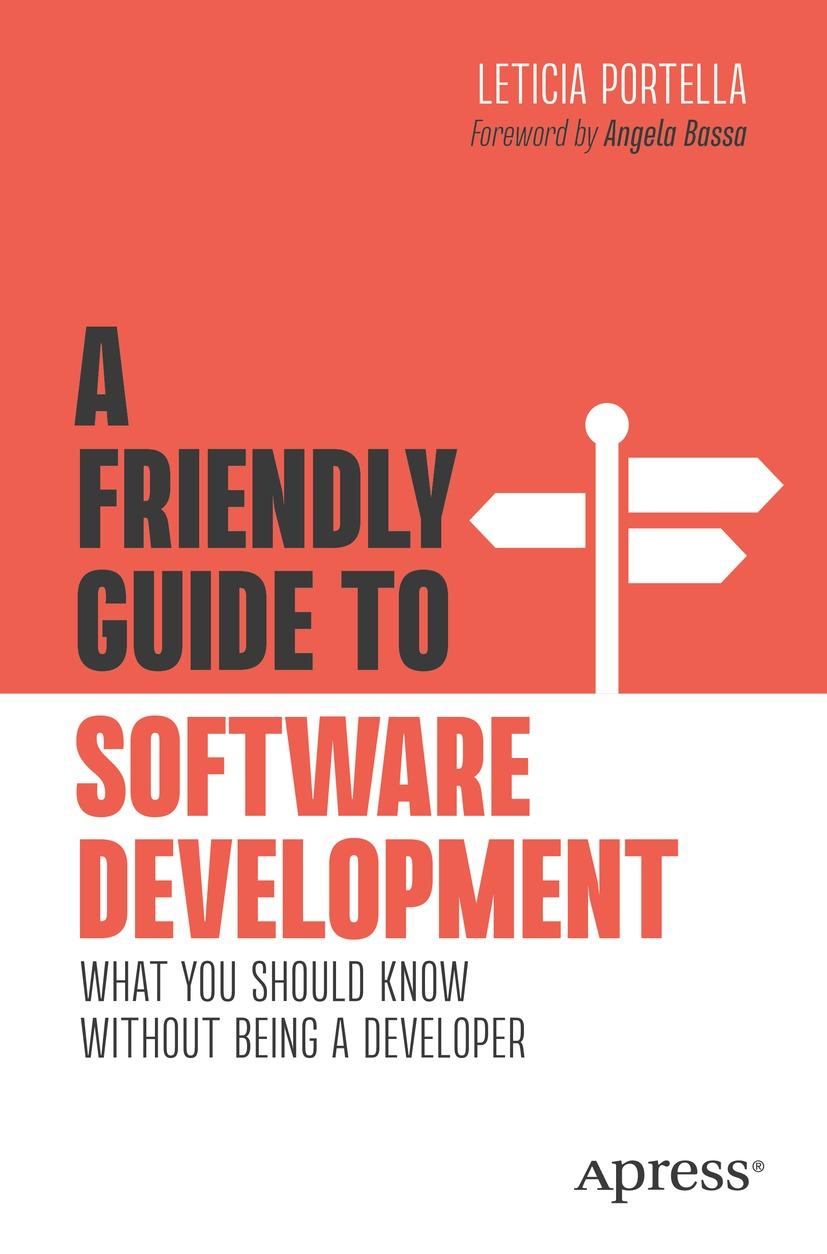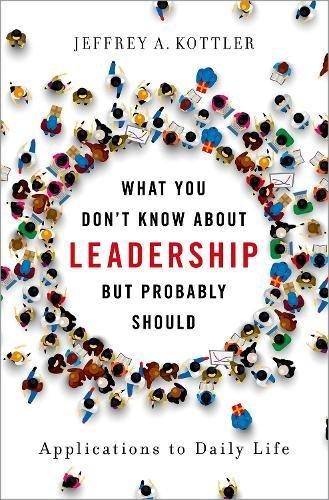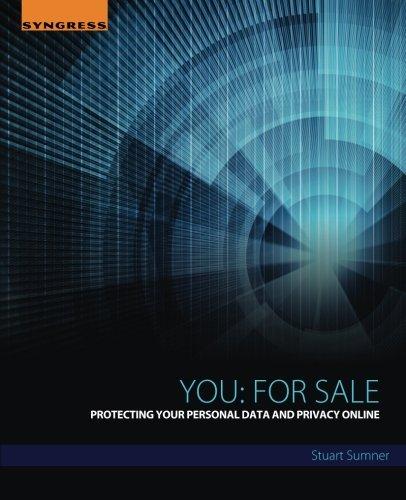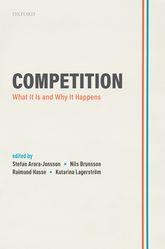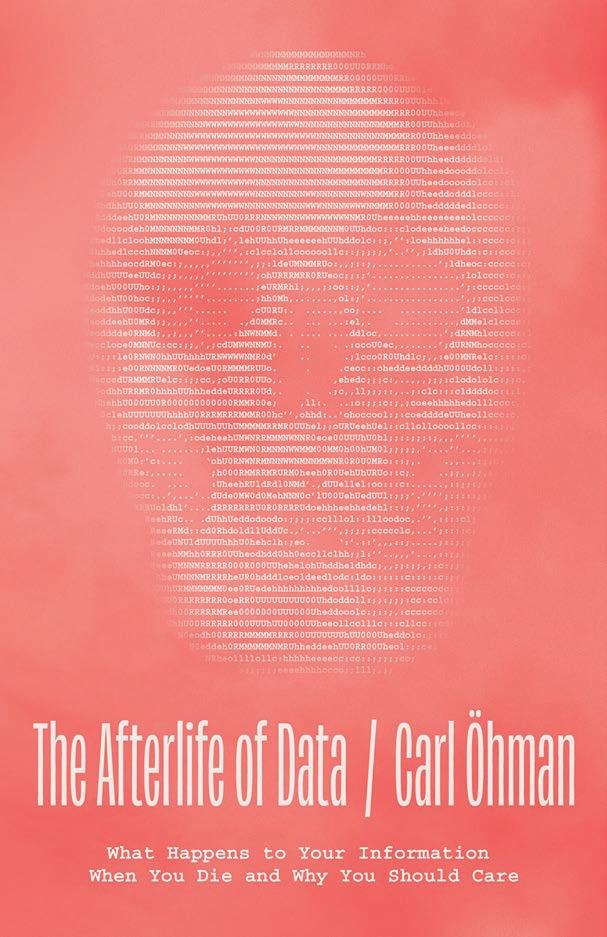Carl Öhman
The University of Chicago Press * CHICAGO AND LONDON
The University of Chicago Press, Chicago 60637
The University of Chicago Press, Ltd., London
© 2024 by The University of Chicago
All rights reserved. No part of this book may be used or reproduced in any manner whatsoever without written permission, except in the case of brief quotations in critical articles and reviews. For more information, contact the University of Chicago Press, 1427 E. 60th St., Chicago, IL 60637.
Published 2024
Printed in the United States of America
ISBN-13: 978-0-226-82822-0 (cloth)
ISBN-13: 978-0-226-82823-7 (e-book)
DOI: https://doi.org/10.7208/chicago/9780226828237.001.0001
Library of Congress Cataloging-in-Publication Data
Names: Öhman, Carl, author.
Title: The afterlife of data : what happens to your information when you die and why you should care / Carl Öhman.
Description: Chicago ; London : The University of Chicago Press, 2024. | Includes bibliographical references and index.
Identifiers: LCCN 2023026893 | ISBN 9780226828220 (cloth) | ISBN 9780226828237 (ebook)
Subjects: LCSH: Digital media—Social aspects. | Death—Social aspects. | Dead. | Future life. | Social media and society. | Digital preservation— Moral and ethical aspects.
Classification: LCC HM851 .O424 2024 | DDC 302.23/1—dc23/eng/20230620
LC record available at https://lccn.loc.gov/2023026893
♾ This paper meets the requirements of ANSI/NISO Z39.48-1992 (Permanence of Paper).
* For Marie
Contents
Introduction: A Collective Matter [1]
The New Natufians [1]
What Do We Do with the Digital Dead? [4]
Everyone’s Concern [10]
1 * From Bones to Bytes [17]
Beginnings [17]
The Deep Time of the Dead [19]
The Portable Dead [26]
The Port from Which We Depart [34]
Where Are We Now? [44]
2 * How to Think about Digital Remains [47]
What Are Digital Remains? [47]
Ghost Cars and Prayer Bots [50]
The Informational Corpse [57]
Can the Dead Be Harmed? [63]
The Digital Encyclopedia of the Dead [69]
Brutus’s Closet [73]
Not So Valuable After All? [82]
3 * The Rise of the Digital Afterlife Industry [87]
Ash & Martha [87]
The Digital Afterlife Industry [89]
Critiquing the Industry [99]
Online Museums [107]
4 * Who Owns the (Digital) Past? [111]
Grave Dangers [111]
Who Is Worth Preserving? [112]
What If Facebook Goes Bust? [121]
Orwell’s Warning [129]
Decentralizing Control [132]
5 * Living in the Post-Mortal Condition [140]
In the Shoes of Max Brod [140]
The Meaning of “Post-Mortal” and “Condition” [142]
Archeopolitan Duties [145]
What Is to Be Done? [150]
Epilogue [159]
Acknowledgments [163]
Notes [165]
Bibliography [179]
Index [189]
Introduction: A Collective Matter
The dead make civilization.
Thomas Laqueur
The New Natufians
One might imagine that in our nomadic origins, being human meant leaving things behind. Anything that could not be carried had to be abandoned—even people. When someone died, whether from old age, disease, or violence, they could not be brought along. Their bones were left to be slowly eaten by the earth. What could be carried on one’s shoulders or dragged through the dirt had to serve the living; memories persisted only in the mind. This transitory life, shuffling from place to place, left little room for permanent memorialization. And so, without the material means to preserve the memory of those who had departed, a community would eventually forget the individuals inhabiting its past.
As this perpetual nomadic march of humanity finally ground to a halt, however, something had to change. With the establishment of the first permanent settlements, abandonment became impossible.1 After all, if you are not walking away from the dead, they are certainly not walking away from you. Among the first known people to make this transition were the Natufians, a community living approximately where Israel is today. Like most cultures of the late Paleolithic, the
Natufians harvested wild grains and used stone tools. What distinguishes them in this setting is the emergence of a curious mortuary ritual, which would later become commonplace among Neolithic cultures. Rather than being left in the sand, the bodies of the dead would remain among the living, buried underneath their dwellings or in the walls connecting the homes of related families. More shocking, at least to us moderns, is that the head of the deceased would be removed, preserved, even decorated. Instead of flesh, plaster was added as a face; instead of eyes, seashells were placed in the empty sockets. The adorned skull would then be placed inside the clay dwellings of the living, alongside countless other skulls like it.2 With time, the living Natufians would literally share their dwellings with the plaster faces of generations of ancestors staring back at them from the walls with glimmering seashell eyes.
This immediate proximity to the departed marked a major shift in history. To paraphrase Robert Pogue Harrison, it provided a platform where two worlds, one above ground and another beneath, could come to interpret one another.3 It reinforced the sense that the dead remained present in the affairs of the living, which, some say, laid the very foundation for human civilization. And indeed, over the millennia that have elapsed since the Neolithic, new, less morbid versions of the same head removal custom kept emerging. Roman aristocratic funerals, for instance, would sometimes feature painted, so-called imago masks, made from wax imprints of deceased ancestors’ faces and worn by actors to symbolize the welcoming of the newly departed into the ancestral community. In ancient Egypt, the bodies of the dead were famously embalmed in their entirety, buried under some of the greatest architectonic wonders our species has ever seen.
In a sense, we still live in the worlds of the dead insofar as we continue to speak their languages, to inhabit their cities and lands, and to build on their legacies. In short, wherever there have been humans, their culture has been informed by the ways they have dealt with past members of their community. As historian Thomas Laqueur concisely put it, “The dead make civilization.”4
Despite these updated ways of keeping the dead (symbolically) present within the domestic environment, the longterm historical trend has been their gradual removal from our daily living spaces. In modernity—the era referred to by scholars as the age of “forbidden death”—the dead have little to no presence.5 They are seen as a disruption of the order of things, a disturbance that must be concealed at any cost. Few moderns (at least among younger generations) have ever even seen a dead body, let alone witnessed someone’s death. Instead, the departed members of modern communities have been exiled to places where we do not need to think about them, except perhaps on given occasions like All Hallows’ Eve or an occasional funeral. They are hidden from everyday life, confined to cemeteries and archives, which are technically open to visitors but could ultimately be left and forgotten at will. In modernity, the dead have tended to be elsewhere.
Until now. Today, they are again entering our dwellings, except that those dwellings tend to be online platforms rather than clay houses. Instead of craniums in walls, the faces of the dead stare back at us through the social media profiles they leave behind, through the photo libraries we keep in our smartphones, and through the myriad traces people leave behind in their daily online activities. They remain perpetually present, and increasingly numerous by the day—so numerous, in fact, that on several social networks they may come to
outnumber living users’ profiles within only a few decades. So, if the dead “make civilization,” our civilization seems to stand before a shift on par with that of the first Paleolithic settlers. We are the new Natufians.
What Do We Do with the Digital Dead?
In the age of digital media, recording has become the default mode of society. Nearly everything we do leaves some kind of trace behind, whether we intend it or not. Our behavioral and social patterns are recorded by the social media platforms we use to communicate, our taste in music and film is stored by the streaming services we use for entertainment, our consumer patterns are logged by our credit cards, and our search data are recorded and stored on one of Google’s roughly 2.5 million servers.6 Even “offline” activities end up on servers. Many apps send geolocation signals every two seconds, giving an almost perfect record of their users’ whereabouts. The Apple Health app, for example, which comes preinstalled on every iPhone, automatically tracks every step a user takes and logs it in the cloud. So, in case you are an Apple user, there’s a file of data somewhere giving a pretty accurate picture of how fit (or unfit) you have been over the years. Regardless of whether you use the internet actively or not, your life produces an ever-swelling volume of data—a digital shadow that grows increasingly similar to you.
In their totality, these data become an almost perfect imprint—a hyperrealistic and three-dimensional imago mask, printed not in wax but in ones and zeros. Yet unlike our biological bodies, and unlike wax, this new digital imprint will not deteriorate after your death. Unless corrupted or intentionally deleted, it will remain intact, untouched by the in-
evitable fate of all organic life. When we encounter the dead through their left-behind data—what researchers call “digital remains”—we are not merely facing a symbolic mask but a lifetime of data, an informational corpse.7
Meanwhile, the technological means to process and “mine” our data is developing at breakneck speed. In the name of targeted advertisement, an entire industry has grown to predict people’s behavior based on their data trails. The most famous example, perhaps, is how Target used a teenage girl’s credit card records to predict that she was pregnant before her parents had found out.8 It is not a perfect example, since, after all, there are some things that only pregnant women will buy. But targeted ads, boosted by the fast development of artificial intelligence (AI), have come a long way. Provided sufficient data, today’s algorithms may even be able predict your pregnancy before you know it yourself. In fact, they work so well that many people are convinced that their phones “listen” to their conversations to suggest ads for products they have mentioned. The truth is that the heaps of data that people leave behind, combined with the razorlike sharpness of AI, make people much more predictable than their imaginations allow them to comprehend. If you do not believe me, just log into OpenAI’s ChatGPT, give it some text you have written, and ask it to reproduce a new text in the same style. If it looks just like the kind of thing you would have written, do not despair; most people are that predictable, and so are the texts they write.
Predictive algorithms do not care whether a person is alive or dead. With enough data they can be trained to predict what someone would do, say, or sound like, were they still alive. Amazon recently announced a new feature for their voice assistant Alexa, which, when fed as little as one min-
ute of recorded audio, lets the assistant speak in the voice of a deceased relative. Similarly, a project in the Netherlands set out to produce a “new” Rembrandt painting, based on all available data on his work. An AI application analyzed every possible aspect of Rembrandt’s style— lighting, motif, brush strokes, angles, and so on—and from those patterns emerged what to most people would appear to be an authentic Rembrandt portrait. The same has been done to complete Beethoven’s unfinished Tenth Symphony. In fact, the app Historical Figures even lets users “chat” with dead historical figures, including Adolf Hitler and Jesus of Nazareth, based on what is historically known about them. With relatively small amounts of data, AI can turn anyone’s legacy into an interactive agent.
Naturally, even the most modest internet user leaves much more information about themselves than Rembrandt or Beethoven did. And just as Rembrandt’s paintings reveal a pattern that can be replicated, so do our digital remains, only our patterns are a lot more detailed. Your personality can literally be extracted from the data you leave behind. As this book will cover in detail, there is even a budding industry around it. MIT start-up Eterni.me, for example, offers users a virtual avatar which, based on their data profile, talks, looks, and behaves just like them.9 The idea is that this artificial agent will make users “virtually immortal” and allow them to chat with their descendants. A new competitor, Hereafter AI, offers the same product, and Microsoft recently filed a patent for a similar product. Soon, our online social presence may no longer be limited to static photos and records of information but will become an interactive agent that responds to new input, or at least continues to produce new content. The faces staring back from the walls of our digital dwellings, in other words, are beginning to speak with voices of their own.
This may sound more like science fiction than real life. Yet, the automation of our online afterlife presence is not some distant futuristic dream. Nor is it necessarily very hightech. On the contrary, it is an increasingly widespread phenomenon, running mostly on mobile devices, which is often paired with religious and cultural customs around the world. Consider the increasingly popular phenomenon of Islamic prayer apps. These nascent services automatically send out supplications (a form of Islamic prayer) from their subscribers’ social media profiles—subscribe and the app will take care of your religious online presence for you—often with the explicit promise to continue posting after their users’ deaths.10 As I will show later in this book, these apps generate millions of automated tweets every day, tweets that are increasingly posted from the dead. This is to say that, contrary to common belief, the most common form of automated posthumous presence is not due to some sophisticated Silicon Valley start-up but arises from the ancient and spiritual practice of prayer. Moreover, such tweets do not necessarily present themselves explicitly as coming from the afterlife, since the profiles from which the content is posted remain intact. You have likely already encountered online content posted by deceased users—you just do not know it yet.
The most fundamental shift, however, is not the new interactivity of the dead, but their constant accessibility. Most of us now have one or several departed friends whose faces continue popping up in our feeds, or whose photos and old messaging logs we return to for comfort. Unlike a grave or a physical photo album, digital remains are accessible from virtually anywhere, with an unprecedented level of granularity. My own grandfather, for instance, who passed away a few years ago, remains constantly within my reach. Whenever I want to, I can pick up my phone, open the Instagram app,
and watch a video of him skiing in the Swedish mountains. I can hear his jolly voice, read our conversations, and laugh at his ironic comments on my agitated political posts. I can even post something on his Facebook timeline. A part of him remains there, and the same goes for nearly every person I know who has died. In the ether, they are still present, constantly on call in one’s pocket, alongside all the others you know and regularly communicate with. Wherever you go, the dead go with you.
Like the emergence of the first permanent settlements in the late Paleolithic, this constant presence of the dead marks a major shift in how we relate to our past and the individuals who inhabit it. It introduces a new mode of being with the dead, which I shall refer to as a post-mortal condition throughout this book. By “post-mortal” I am certainly not referring to some form of digital immortality, by which our souls live on in electronic format. Such a prospect has become a fantasy among so-called transhumanist communities, who believe that the digital revolution is the next step in human evolution, but it has little to do with reality, at least for the foreseeable future (and then some). 11 I am also not saying that our digital remains will necessarily endure in perpetuity. Digital data are, like everything else in the world, dependent on material objects for their existence— wires, servers, networks, and so on.12 Like everything else surrounding us, their longevity is subject to the laws of thermodynamics. We are, and will always remain, fundamentally finite. What the post-mortal condition denotes is rather a reconfiguration of the relationship between the living and the dead, a mode of being whereby the dead remain present among the living by default. Unlike previous technologies used to preserve the dead—cemeteries, archives, photo albums—the internet is
no longer something that we visit and leave. It is something that we live inside. Today, no one says that they are “going online” or that they are “offline” whenever they do not use the internet. We are constantly connected, constantly within the network. Even if you do not have your phone or laptop with you, you may be close to a car, a fridge, or a TV that is connected to the internet. According to a white paper by Juniper Research, the total number of connected devices is expected to reach eighty-three billion by 2024.13 In this giant network of connected devices, we live onlife, to use a term coined by philosopher Luciano Floridi, in a mode of being where everything is always at hand—even the past.14 For the first time in thousands of years, we live within the same matrix as the dead through the connected archives of the web. The border that once separated our world from theirs is rapidly eroding. I describe our new co-dwelling with the dead as a condition because it remains an open question how, if at all, we as a society choose to live with the presence of the past generation. To be sure, this is not a retreat to some original, more natural relationship to them. As philosopher Hans Ruin reminds us, “the ethical and political interaction between the dead and the living will always remain an open challenge, not just a case of being either with or without the dead.”15 I could not agree more, but the point here is that this open challenge is never neutrally manifested to us. It manifests itself in the technological and material circumstances under which the dead remain present. As such, the advent of the internet, and the emergence of the onlife mode of being, changes the conditions under which we interact with, interpret, and negotiate with the dead. Just like the Natufians were suddenly faced with the question of what to do with the bodies of the dead, we too are now faced with the question of how to deal
with their digital presence. They are there, and they will not go away unless we actively remove them.
Everyone’s Concern
This book sheds light on the ethical, political, and economic challenges that arise from our post-mortal condition. This is something that affects us all. As we know from personal experience, dealing with the posthumous presence of the deceased can be a difficult process for someone who has just lost a loved one, especially for the next of kin. If the departed person leaves no passwords behind, how does one take down their online accounts and profiles? How does one notify online contacts of their death? And what about their digital assets, subscriptions, and virtual avatars? These are questions that people do not normally walk around thinking about. They pose new and often intimidating challenges, ones for which we have little or no preparation. Moreover, online platforms are rarely designed with such questions in mind, meaning that interfaces can be less than accommodating when one tries to remove a profile or report a user as deceased—especially for an elderly person unfamiliar with apps and websites. On top of this, the presence of a deceased person’s digital remains also raises questions of a more ethical nature. Should the online presence of a person be deleted upon death? Or, on the contrary, is it imperative to preserve it? Who has the authority to decide? Does a dead person still have a right to privacy? And what about the companies that own and control their data—what should their responsibility be? Answering these questions is a responsibility that ultimately falls on each of us as individuals. At the same time, we are also facing such questions col-
lectively, as a society, or better, as a civilization, responding to the lingering presence of past generations. Here, our individual experiences are secondary, for we are each affected, whether we or our loved ones use the internet or not. According to the United Nations’ population projections, around 2.2 billion people are expected to pass away within the next three decades alone (almost eight billion over the course of the century), many leaving a considerable volume of data behind.16 These data will eventually fill up the servers of the platforms we use for daily communication. As I outline in some detail in chapter 2, the dead on Facebook may even come to outnumber the living as soon as 2070. If the network continues to grow at current rates, it will have accumulated close to five billion profiles of deceased users—from virtually all around the world—by the end of the century. Every social network, every business that gathers data about its consumers is facing a similar future. At some point the users or consumers will die. Then what? For Facebook, allowing bereaved families either to remove the profile or to turn it into a digital memorial has served as a temporary solution. But what happens as the custodians of the memorials also pass away? And as the servers are slowly taken over by the dead, which threatens the very business model of ad-driven platforms, the question remains: What do you do with their data? What should be done with their data?
As I will stress repeatedly throughout this book, whatever the answer is, the implications go far beyond the consequences for individual users. Insofar as the dead “make civilization,” this is a concern for entire societies, not just individuals and their families. Why? Because the digital remains of the billions of individuals who use the internet today amount to something more than a collection of indi-
vidual user histories. In aggregate, they also constitute our collective digital past—the basis for our society’s relationship to its former members. Arguably, the flood of data we produce today constitutes the biggest archive of human behavior in the history of our species. It may even become the primary source of historical information that we pass down to future generations—humanity’s shared digital cultural heritage. 17 We ought to be careful about how we manage it.
Unlike previous forms of historical resources, our aggregated digital remains are not only a reflection or representation of life in the early twenty-first century—increasingly, they are life in the twenty-first century. In the onlife world, the dichotomy between on- and offline becomes trivial because our lives together increasingly take place within the network. Events and movements such as Black Lives Matter, #MeToo, and the Arab Spring uprisings are, to a large extent, born digital. Their data traces are not merely representations of events taking place “in real life.” They have had an online existence from the very beginning. As such, they will become an invaluable source of information to future generations seeking to understand their past. Imagine, for a second, if we had access to Napoleon Bonaparte’s Facebook messages, or the data patterns of the German population in the 1930s. The lessons learned would be endless.
Some may consider what we post on social media to be no more than “trash.” But trash is in fact among the richest sources of information about ancient cultures. Temples and monuments may tell us much about the elites that governed ancient civilizations, yet they disclose little about the everyday lives of the ordinary people who lived under them. What people consider mundane, by contrast, is often rich with information about their daily lives. Moreover, due to the ubiq-
uity of the internet and its worldwide reach, we have, maybe for the first time ever, an opportunity to create a historical record that genuinely reflects the diversity of human life, not just the select (male) elite that has dominated the records left to us by our forebears. As such, the accumulation of digital remains raises questions that have not occurred to any previous generation, questions of what we owe to the past generations who linger on our servers, and to future ones, who will depend on these same records to understand their past. Who owns and has authority to control these data? What principles should guide their preservation? And how should it all be governed? As will become clear throughout this book, there is a considerable discrepancy between how we should answer these questions and how our digital remains are currently managed.
Back in 2002, historian Roy Rosenzweig noted that “our most important and imaginatively construed digital collections are in private hands,” which, he warned, would pose “grave dangers to the future of the past.”18 The two decades that have passed since have not proved him wrong. Digital data are increasingly concentrated around a handful of powerful private actors, which has led to power asymmetries of unprecedented proportions. Never before have so few had so much control over so much information about the past, and with it, the power to shape the present. And the imbalance is only growing. As I discuss in chapter 4, this poses a grave political threat. George Orwell warned in Nineteen Eighty-Four that “who controls the past controls the future.”19 In a couple of decades, it may not be Orwell’s evil party that controls the past but a single for-profit corporation. If Meta (Facebook), Google, and a handful of actors like them continue to monopolize our digital past, it is not inconceivable that they
would use this power, intentionally or unintentionally, to advance their political and economic interests.
The corporate control of our digital heritage is also problematic in relation to the selection of what materials are worth preserving. Contrary to what people often expect, digital data are fragile, and they are often corrupted or destroyed if not properly managed. “Digital information lasts forever—or five years, whichever comes first,” as phrased by digital preservationist Jeff Rothenberg.20 Archives require constant care to remain useful and readable—file formats must be changed, hardware needs to be replaced, and systems need to be updated and organized. All of which are labor-intensive undertakings. In the face of limited resources, some data— or someone’s data—need to be weeded out. And this requires some form of criteria for which data have “worth,” some principle that helps guide the selection process. Unfortunately, the present system does not permit us to collectively ask ourselves what these principles should be, because today, our digital remains—the fabric of our collective digital past—are predominantly owned and controlled by private for-profit corporations. And for a for-profit enterprise, only one type of value counts: profit. If you do not keep up with the capital accumulation of your competitors, you are doomed to fail. It does not matter how much nonmonetary value (e.g., beauty, happiness, honor) a company generates—if it does not lead to long-term economic growth, it is doomed. In sum, if we leave the management of our collective digital past solely in the hands of the industry, the question “What should we do with the data of the dead?” becomes solely a matter of “What parts of the past can we make money on?” We replace the open discussion on what principles should guide the selection of resources passed down to future generations with a system that can only appreciate one value: capital.
The stakes involved in the fate of our digital remains could hardly be higher. Humanity is at the risk of losing access to its collective past and ending up in what archivists call a “digital dark age.”21 Or worse, we may end up with a hugely asymmetrical distribution of power over the data that remain. Even if you do not plan on dying anytime soon, and even if you may not personally care about what anyone does to your data after your death, the future of the past is, or should be, the concern of everyone. This book shows why and how.
What I have emphasized so far is that our relationship with the dead is experiencing a fundamental shift. What is at stake is not just posthumous privacy, or our ability to visit some deceased relative’s Facebook profile, but our civilization’s very relationship to its future past. In our new mode of being with the dead, the post- mortal condition, the past and its dead have once again become present to us. And this presence forces us to ask new difficult questions: How should we organize the management of digital remains? How can we gain more control over our collective digital legacy? What do we owe to future generations? And whose responsibility is it?
These are big ethical questions without any obvious answers. The goal of this book is not to provide a clear-cut solution or blueprint for how to solve them. In fact, part of my argument is that they cannot be solved by one person, for they require democratic deliberation. As with all matters of political significance, there is no objectively superior solution, independent of what goals we consider worth pursuing. Whatever road we settle upon will be full of conflicts between the many stakeholders involved. Toward the end of the book, however, I shall offer some sense of direction
to guide us forward as we moderate these conflicts. For one thing is certain: whatever road we settle upon, we must walk it together. The living, the dead, and the unborn all have a stake in how we steward our synthetic environment. We hold this responsibility not only as social media users and mourning individuals, but as archeopolitans—citizens of an archive inhabited by the ongoing project we call humanity. Like the Paleolithic tribes before us, we must learn how to live with a new kind of presence of the dead, to be good archeopolitans. This could mean actively removing the dead from our servers, but then we must ask whom to remove first, and what to do when we disagree on the answer. It also could mean finding ways of making the dead part of everyday life again, but then we need to agree on how, and who should carry the cost, not least in terms of the carbon footprint of data storage. It could also mean everything in between these extremes. The point is that we have to choose. Indeed, the emergence of the post-mortal condition is a radical reconfiguration of society’s relationship with its past members, but it is not a mechanical process. It is and will always remain an open challenge.
1 * From Bones to Bytes
As homo sapiens we are born out of our biological parents. As humans we are born of the dead.
Robert Pogue Harrison
To be ignorant of what occurred before you were born is to remain always a child. For what is the worth of human life, unless it is woven into the life of our ancestors by the records of history?
Cicero
Beginnings
Those who do not know their history remain children. For a child, everything is for the first time, the world a mysterious and unpredictable place. It is only when relating events to the past, both one’s own and that of one’s surroundings, that the events around us begin to mean something. The unknown beings of the world outside the womb become parents, siblings, friends, or enemies only in reference to their past actions. It is by relating today to yesterday that we anticipate tomorrow, and only by anticipation can we make meaning and take command.
Something similar can be said about communities undergoing radical change. A community without a past is a community that has lost control of itself. If we do not know from which port we departed, we cannot know our direction even if our location is known, and so it becomes hopeless to take
command of the ship that is society. For any study of society’s future—and this book is above all a study of the future—we must therefore begin by turning our gaze backward to locate our point of departure. For the purposes of this book, this means that our first question ought to be: How have we lived with the dead in the past? Only in light of this question can we begin assessing how the digital revolution is reconfiguring our relationship to the dead, and what that process ought to look like.
I realize the gargantuan proportions of this question. Since the presence of the dead constitutes a cornerstone in just about every human institution— from religion to language to architecture— it is impossible to account for changes in the social role of the dead without also telling the entire story of our kind. Such a scope is far beyond what any single chapter, or even book, can hope to accomplish. Instead, let us focus on a more specific question, namely: What can we learn from previous technological disruptions of our relationship with the dead?1 The response that I lay out in the following pages is threefold: (1) From the emergence of the first permanent settlements, when the dead became inescapably present among the living, we learn that the technological mediation of the dead is what makes civilization possible, that humans always live within a world built by the dead. (2) From the invention of written language, we learn that the advent of the digital is merely the latest chapter in a quest as old as humanity, a quest to decouple dead persons from their corporeal presence by providing a portable prosthetic voice, face, or body of information that can travel far beyond biological confines. (3) And finally, from the triumph of the cremation furnace in the nineteenth century, we learn about the cultural backdrop against which
the current disruption is taking place: the hidden death of modernity.
These three lessons do not necessarily align to a linear narrative. History rarely does. Still, we need to begin at the very beginning, in what the historian Thomas Laqueur calls the deep time of the dead, when the presence of the departed consisted of little more than a collection of bones.2
The Deep Time of the Dead
According to the German philosopher Hans-George Gadamer, caring for the dead is an exclusively human endeavor, a “conduct of life that has spiralled out of the order of nature.”3 In this view, animals have no concept of a personhood beyond physical presence and hence show little interest in their deceased kin. Caring for the absent, and specifically the ritual of burial, is thus what sets us apart from other organisms on this earth. Recent ethological research, however, casts serious doubt on these speculations, at least if we are to read them literally. Many animals—including wolves, chimpanzees, elephants, dolphins, otters, geese, sea lions, and magpies (yes, really!)—do in fact mourn their dead, sometimes for days.4 Elephants have even been observed standing by the carcasses of their dead offspring for weeks, and they often take great interest in skeletal remains of their kin, as well as those of individuals unrelated to their herd. (Some observations suggest elephants’ attempts at burying, or at least covering the remains of, other elephants with leaves and sand.) In other words, caring for and relating to the dead has not spiraled “out of” nature but is one of our deepest instincts, shared with many other members of the animal kingdom.
Still, we should not judge Gadamer too quickly. After an animal’s corporeal body has decomposed, the sole expression of its presence is a pile of bones, and (if it has been lucky) the genetic code passed down to its offspring. The animal successor will eventually find itself in nothing more than a habitat, a surrounding of mere practical utility. Humans, on the other hand, do not live only in habitats, but always within the worlds inherited from those who came before. We do not inherit merely our ancestors’ DNA, but also their language, culture, and ideologies, as well as the physical infrastructures they built to keep society afloat. We do not live only through the genetic information of our forebears, but through and within the cultural information they left behind for us. In fact, imagining a human that does not live in such a world is impossible, for a creature that did not live in a world created by humans, or something like humans, would not be part of the intergenerational project we know as humanity.
No one has framed this more eloquently than Stanford literary scholar Robert Pogue Harrison in his claim “As Homo sapiens we are born of our biological parents. As human beings we are born of the dead.”5 Indeed, to be a member of humanity requires more than a mere biological qualification. To be human is, above all, to “come after those who came before,” to borrow another one of Harrison’s phrases.6 In any case, human beings are, and have always been, in constant correspondence with their past. We live in and through a constant relationship to those who came before. The very fact that you can read these letters is a heritage from the Roman Empire, whose alphabet we inherited; it is a heritage from the Anglo-Saxons, in whose language we are now communicating. The fact that these words have any meaning whatsoever is only because they point backward in time, not to some
original point of reference, but to an endless sequence of references that reaches all the way back to the animal kingdom and beyond. “Humanity begins where there is already an ancestor,”7 to borrow one last phrase from Harrison.
Yet our story needs to commence somewhere, and for this book, I would like to place that “somewhere” at the eclipse of the Paleolithic, right at the erection of the first permanent settlements. For the Paleolithic nomad, the presence of past generations was limited. Being human, as it were, was to leave things behind—including people. Although tribes probably returned to the same areas on yearly basis, they were not permanently attached. Life was to travel onward in small hunter-gatherer bands, following the change of seasons and the migration of game. Archaeological evidence from this time period is sparse. We cannot know exactly how prehistoric humans dealt with, and related to, their deceased kin. But insofar as today’s surviving nomadic cultures give any clues (a deterministic assumption, to be sure), the dead were probably not a very active part of social life, at least not as distinguishable individuals. Contemporary nomadic tribes, like Bedouins, put little effort into burial. 8 Bodies are generally covered with an anonymous heap of sand or stone and then abandoned. Only rarely are the dead spoken of thereafter.9 This custom has stayed roughly the same for hundreds, perhaps thousands, of years. Given the practical conditions of a nomadic lifestyle, it was probably once shared by all of humanity.
Of course, the dead may live on through legends, songs, and traditions and as part of an imagined greater spirit that inhabits the land. Yet, while such biological memory is easy to carry, it is also fickle, deceptively plastic, and it puts a definitive cap on the number of individuals who can be remem -
